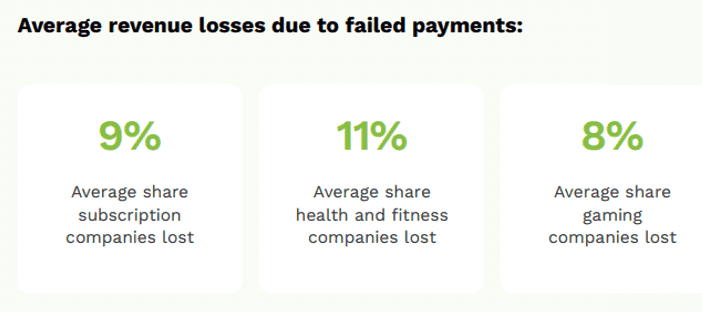Health and Fitness Companies Lose 11% of Revenues From Failed Payments

Subscription businesses reap the rewards of recurring payments — which translates into predictable cash flow.
But that’s only if the subscribers’ transactions are successfully completed.
In the “Decision Guide: Tracking Failed Payments,” a PYMNTS and FlexPay collaboration, a survey of more than 200 executives sought to examine the relationship between failed payments and customer churn.

All told, subscription companies lost an average of 9% of their revenue to failed payments. That sobering stat becomes even more alarming depending on which vertical you examine. For health and fitness firms, the problem is even more acute, as these companies lost 11% of their top lines to failed payments.
There’s at least some recognition that failed payments are tied to customers voting with their feet and canceling their subscriptions. As many as 50% of companies said failed payments are a direct cause of customer churn; 26% of companies said failed payments are the most important contributor to customer churn.
And yet, there seems to be a disconnect.
Only 17% of subscription businesses track failed payments — even while 36% of them track churn.
![]()
Many subscription providers said tracking failed payments would not improve their bottom lines — but PYMNTS research showed that there’s a significant, positive ripple effect that occurs when tracking and analyzing payments failures. The subscription businesses that track and analyze failed payments lose 37% less revenue than those that do not track this metric. Providers that track failed payments recover 43% more of these payments.
As many as 37% of companies recognized that customers’ experiencing payments software issues is a leading cause of failed payments, which indicated that there’s some relatively readily identifiable problems to attack — and fix. Indeed, the research showed two-thirds of the subscription providers that are top performers in recovering failed payments explicitly track failed payments.
Top performers are 12 times more likely than bottom performers to use third-party payment recovery software solutions. This approach leads to payment recovery rates 1.5 times higher than bottom performers — and thus translates into more robust revenues.

